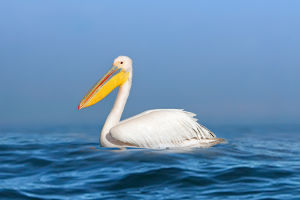In the vast African savanna, the lion stands as one of the most iconic animals in the natural world, with its majestic presence and powerful aura.
As a top predator in the food chain, lions play a crucial role in the ecosystem.
Their presence not only affects the population of prey species but also helps maintain ecological balance.
Lions typically live in social groups known as “pride,” consisting of several lionesses and one or two males. The lionesses are the primary hunters, responsible for providing food for the pride, while the males protect the territory and cubs, ensuring the safety of the family.
The physical characteristics of lions are quite remarkable, especially those of the male lions, whose magnificent manes not only symbolize their strength but also serve as important indicators for attracting mates.
The color and size of the manes vary among individuals; typically, a darker and denser mane signifies a lion's health and genetic advantage. During the breeding season, lionesses tend to choose males with fuller manes as partners, which helps transmit favorable genes and enhances the survival rate of the offspring.
The hunting strategies of lions are also noteworthy. They usually hunt at dusk or dawn, using the low grass to approach prey stealthily. The lionesses often cooperate, forming an encircling formation to surround and attack their quarry.
The main prey of lions includes zebras, wildebeests, and other large herbivores, but during food shortages, they may also hunt smaller animals. The success of a hunt not only relates to the survival of the lions themselves but also directly impacts the social structure and health of the pride.
Lions are not only vital predators in the ecosystem; they also hold significant cultural importance. In many civilizations, lions are viewed as symbols of strength, courage, and royalty. In ancient Egypt, lions were associated with the goddess Sekhmet, symbolizing protection.
In Chinese culture, lions have become symbols of guardianship, commonly seen in lion statues at temples and important places. Whether in ancient cultures or modern society, the image of the lion has deeply rooted itself in people's hearts, becoming synonymous with nobility and power.
However, despite their important position in nature and culture, the survival of lions faces severe challenges. Habitat loss, dwindling prey populations, and human interference are contributing to the gradual decline of lion numbers.
Particularly in Africa, lion habitats are increasingly encroached upon by agriculture and urbanization, leading to reduced living spaces for these magnificent animals. At the same time, poaching and illegal trade pose significant threats to their survival.
To protect this magnificent species, many countries and organizations have begun taking action by establishing reserves and implementing conservation measures to safeguard the lions' living environments and population numbers.
The lion, as an essential member of the ecosystem, not only captivates people's attention with its imposing appearance and tremendous power but also plays a vital role in biodiversity and cultural heritage.
We have a responsibility to protect these great animals, maintain ecological balance, and ensure that lions continue to roam the African savanna for years to come.


